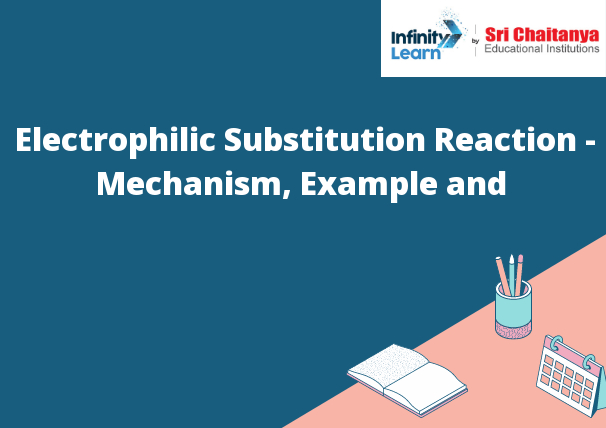Table of Contents
Electrophilic Substitution Reaction
The electrophilic substitution reaction is a type of organic reaction in which an electrophile attacks a molecule, causing the substitution of one atom with another. In most cases, the electrophile is a carbon atom that has been substituted with a leaving group, which is then replaced by another atom or molecule. The electrophile can also be a nitrogen atom that has been substituted with a leaving group, which is then replaced by another atom or molecule.

Types of Electrophilic Substitution Reactions
There are three types of electrophilic substitution reactions: S N 1, S N 2, and E1.
- S N 1 reactions are the most common, and involve the attack of the nucleophile on the carbon atom of the substrate. The S N 1 reaction is a two-step process: the first step is the slow formation of the carbocation, and the second step is the fast attack of the nucleophile on the carbocation. The S N 1 reaction is favored by polar solvents, because they stabilize the carbocation intermediate.
- S N 2 reactions are also two-step reactions, but they involve the direct attack of the nucleophile on the substrate. The S N 2 reaction is favored by nonpolar solvents, because they do not stabilize the carbocation intermediate.
- E1 reactions are rare, and involve the elimination of a water molecule from the substrate. The E1 reaction is favored by polar solvents, because they stabilize the carbocation intermediate.
Electrophilic Aromatic Substitution Reactions
The electrophilic aromatic substitution reaction is a reaction between an aromatic compound and an electrophile. The electrophile attacks the aromatic ring, and the electron density is transferred from the ring to the electrophile. This leaves a positive charge on the ring, and the electrophile is attached to the ring.
Electrophilic Aliphatic Substitution Reactions
An electrophilic aliphatic substitution reaction is a type of organic reaction in which an electron-rich molecule, called an electrophile, attacks an electron-deficient molecule, called a nucleophile. The electrophile donates an electron to the nucleophile, forming a new covalent bond between the two molecules. This type of substitution reaction is often used to change the functional group of an organic molecule.
Reaction of Amines with Sulfonyl Chloride
The reaction of an amine with sulfonyl chloride results in the formation of an amide.
Types of Electrophilic Substitution Reactions of Anilines
There are three types of electrophilic substitution reactions of anilines:
1. Nitration
2. Sulfonation
3. Acylation
Nitration of Aniline
In the presence of an acid catalyst, aniline is nitrated to produce aniline nitrate.
The nitration of aniline produces a mixture of regioisomers, including the 2,4-dinitroaniline.
Sulphonation of Aniline
The sulphonation of aniline proceeds by the attack of a sulphonic acid on the aromatic ring. The products of the sulphonation reaction are a mixture of monosulphonic acids and disulphonic acids.
Halogenation of Aniline
A mixture of aniline (3.0 g, 0.025 mol) and chlorine gas (Cl2) (10.0 g, 0.075 mol) was heated in a flask at reflux for 3 h. The mixture was then cooled to room temperature and poured into ice water. The product was extracted with ethyl acetate (3 x 15 ml). The combined organic extracts were dried over magnesium sulfate, filtered, and concentrated in vacuo. The product was purified by silica gel chromatography (hexane/ethyl acetate = 9:1) to give 3.5 g (97%) of the desired product, 2-chloroaniline.
2-chloroaniline
C6H5NHCl
Mol. Wt. 109.55
H NMR (CDCl3) δ 7.35 (d, 1H), 7.05 (d, 1H), 3.85 (s, 3H), 3.50 (s, 3H).








